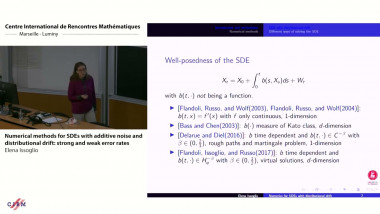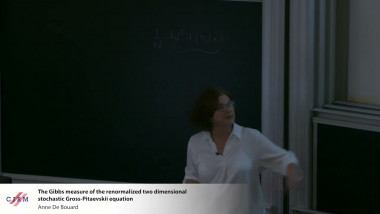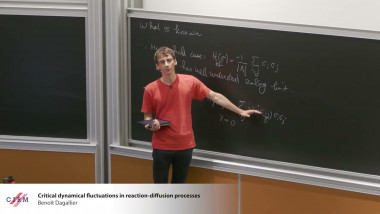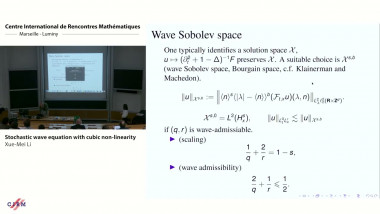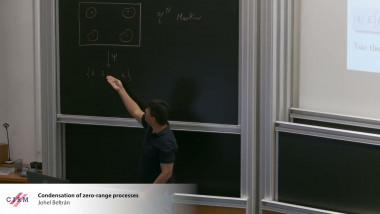Apparaît dans la collection : Interacting particle systems and related fields / Systèmes de particules en interaction et domaines connexes
The theory of scaling limits for interacting particle systems with conservation laws–namely, hydrodynamic limits, fluctuations, and large deviation principles–has been extensively developed for specific models. However, a model-independent, unified framework for formulating and proving such scaling limits is still lacking. In this talk, I will explain a general framework introduced in [1, 2] that encompasses various classes of discrete particle systems, including the exclusion process, the generalized (or partially) exclusion process, the generalized misanthrope process, the multispecies exclusion process, and the multi-lane exclusion process. Within this framework, we encounter two fundamental questions that arise independently of the specific jump rates: • How should we formulate the notion of conserved quantities? • What conditions are required for the scaling limits to hold? I will present our answer to the first question, along with its co-homological justification. For the second, I will discuss interesting combinatorial structures that emerge naturally from these considerations and introduce new models that fit into this unified setting (see [2, 3]). Furthermore, assuming that the jump rate admits product reversible measures, we define the diffusion matrix and the mobility matrix using a geometric formulation, regardless of whether the system is of gradient type (see [4]). Based on this formulation, we present the conjectured universal forms of the hydrodynamic limit and equilibrium fluctuations. We also discuss the current gaps in the mathematical proof of these results. This talk is based on joint works with Kenichi Bannai, Koriki Jun, Hidetada Wachi and Shuji Yamamoto.
